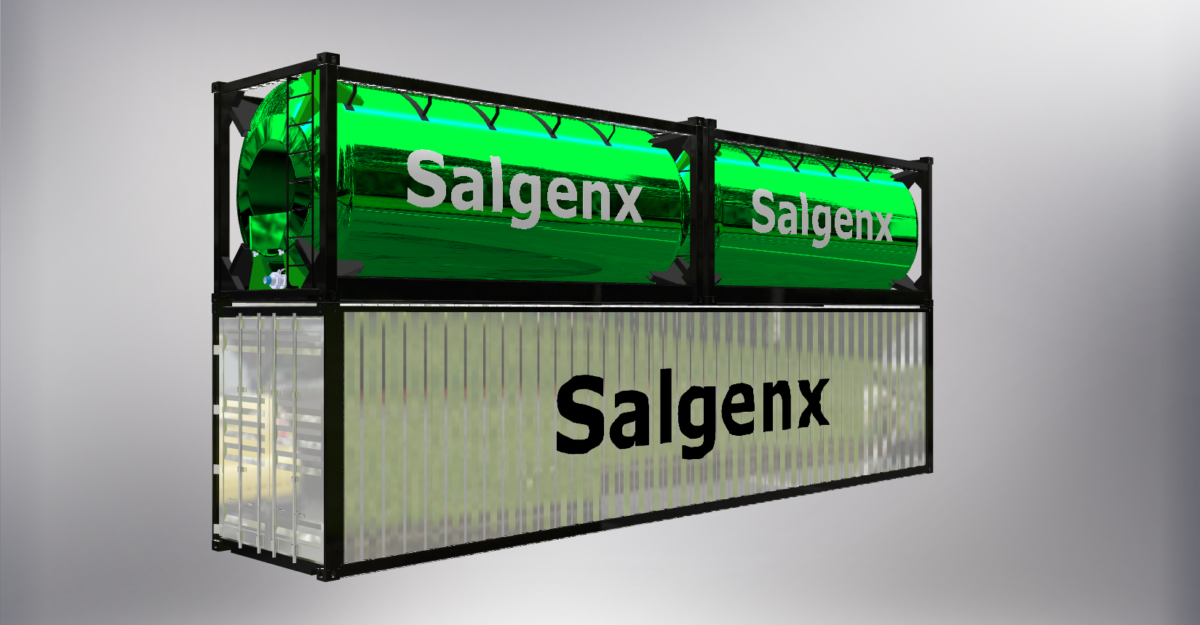US-based startup Salgenx has integrated ultracapacitors with its saltwater redox flow batteries (SRFBs), resulting in enhanced power response, increased efficiency, and improved energy density.
The company unveiled its scalable SRFB earlier this year. The system features two separate tanks of electrolytes, one of which is regular saltwater. It does not use any lithium or vanadium and is membrane-free, unlike other flow batteries, thus promising big gains at the levelized cost of storage level.
The company claims that material costs of $5/kWh, $257kWh for system infrastructure, and a total system cost of $500,000, or $166/kW for the 3,000 kWh battery. The technology purportedly has a life expectancy of more than 25 years and a round trip efficiency of 91% at 10 mA/cm². With 125.7 Wh/L, its energy density outstrips that of most other flow battery solutions available today.
The Salgenx system circulates saltwater and a proprietary electrolyte through electrodes, which regulate the input and output of electricity from the battery. The battery is said to be suitable for an array of applications including grid scale power storage (both standalone or with solar or wind power), demand support, grid arbitrage, microgrid deployment, voltage and frequency regulation, co-generation, electric vehicle charging stations, and desalination, as well as thermal storage.
Now, with the integration of ultracapacitors, SRFBs are expected to deliver even greater benefits. The integrated system is said to ensure rapid power output within milliseconds, compensating for the slower response time of SRFBs and significantly boosting the overall power output of systems.
With the addition of ultracapacitors, the SRFB system is now able to efficiently handle short-duration high-power demands, according to Salgenx. This increased efficiency extends the lifespan of the SRFB and enhances the overall performance of the system.
SRFBs are known for their high energy density, while ultracapacitors excel in power density. Therefore, SRFB provides long-duration energy storage, while the ultracapacitors supplement it with high-power bursts when needed, resulting in a more comprehensive energy storage solution, according to the manufacturer.
“The successful integration of ultracapacitors with SRFBs will be a significant milestone for Salgenx and the renewable energy industry as a whole,” said Greg Giese, CEO of Salgenx.
This content is protected by copyright and may not be reused. If you want to cooperate with us and would like to reuse some of our content, please contact: editors@pv-magazine.com.




One of the features we have been looking at over a number of years is non lithium batteries capable of holding energy for long periods.
We went down the graphite route, but whilst told we could store say a 40 ft container with non lithium, I.e. Supercaps, we found issues with the period that energy could be held.
We are a regulated climate change fund. We are looking to acquire product for our clients, large commercial and land solar companies and support manufacturers in this sector.
We are the opposite to a vulture fund have entered the market in 2018.
“The company claims that material costs of $5/kWh, $257kWh for system infrastructure, and a total system cost of $500,000, or $166/kW for the 3,000 kWh battery.”
You meant, I think, $166/kWh.